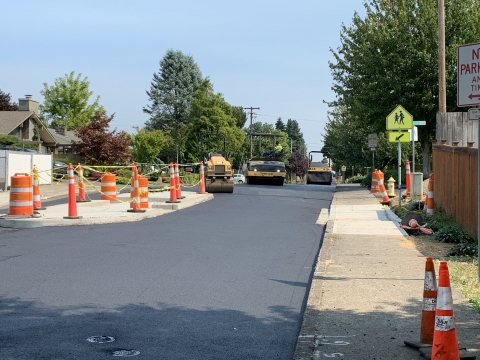Hot Mix Asphalt also known as Asphalt Overlay
This surface treatment is for structural reinforcement on arterial and collector roads in both urban and rural areas. The depth of an overlay is between 1 and 4 inches.
Surface defects and irregularities are repaired prior to adding a new layer of hot mix asphalt.
In some instances, a thin layer of asphalt is applied to subdivision or access roads that have surface irregularities but remain structurally sound.
This paving, known as a thin lift, evens the road surface and corrects some drainage issues. It provides a more modest treatment on less heavily used roads than a standard overlay.
There are some driver delays with asphalt overlays. Flaggers typically can guide vehicles through the construction zone without fully closing the road.
Door hangers will be used to notify property owners and businesses. Property owners should watch for a door hanger three days prior to the beginning of work in each section. Businesses affected by the work will be notified at least five days in advance of the work.
Clark County provides an online interactive map so residents can get a general idea for where the HMA locations are.
Vegetation trimming
In preparation for summer road work, residents sometimes need to prune their vegetation so construction vehicles can get close to the curb.
In addition, vegetation needs to be trimmed to improve traffic visibility and remove sidewalk or pedestrian obstructions.
Homeowners are responsible for pruning and maintaining their vegetation, including debris disposal.
All low-hanging material needs to be trimmed to provide 14 feet of vertical clearance from the top of the curb and 8 feet of clearance from the full width of the sidewalk.
Bushes, shrubs and other low vegetation also need to be trimmed so they don’t hang into the street.
If residents do not trim their vegetation, county road crews will cut it. This work will be done for free, but it will not be done to a landscape quality desired by many residents.
For this reason, residents are encouraged to trim their vegetation.
